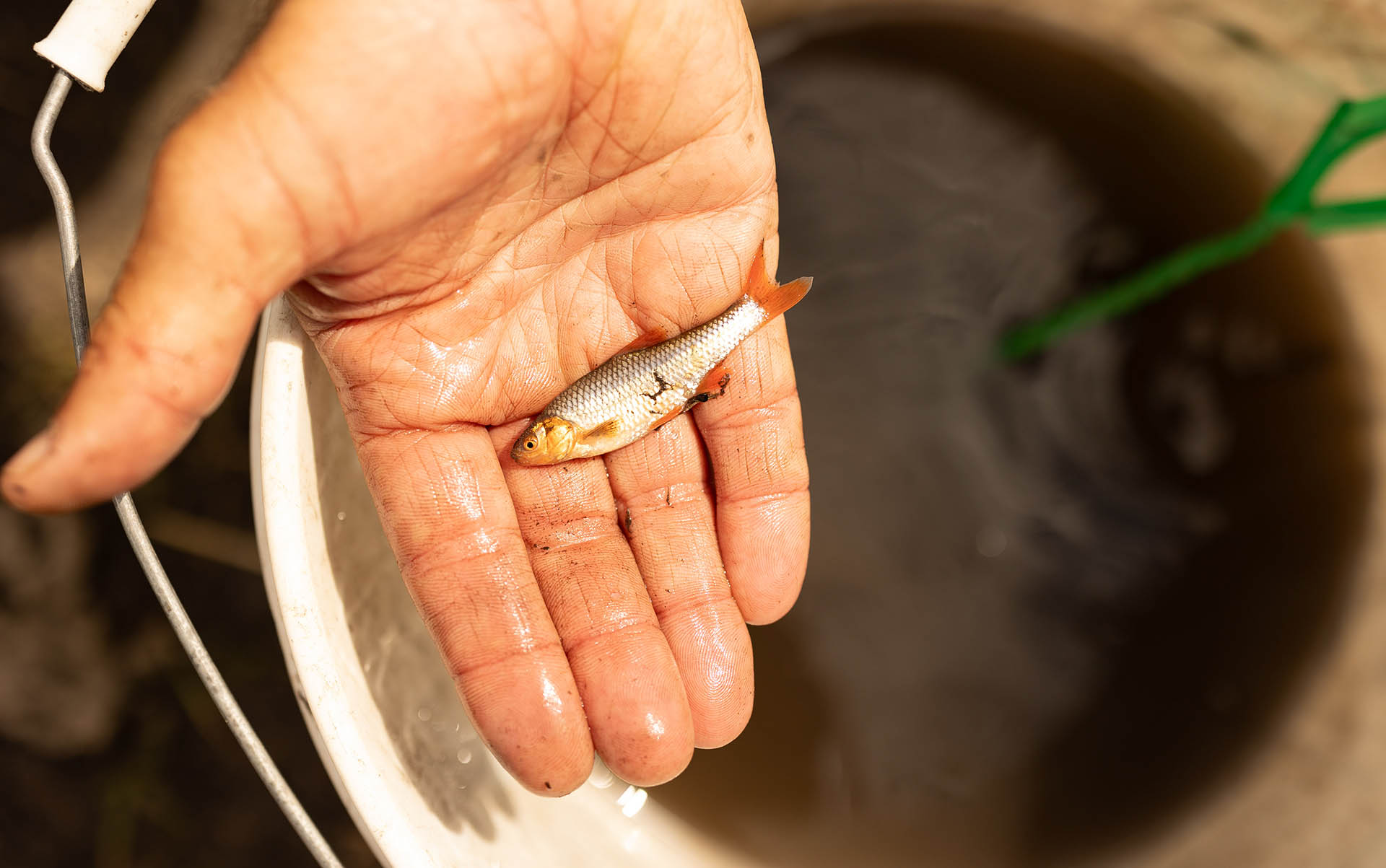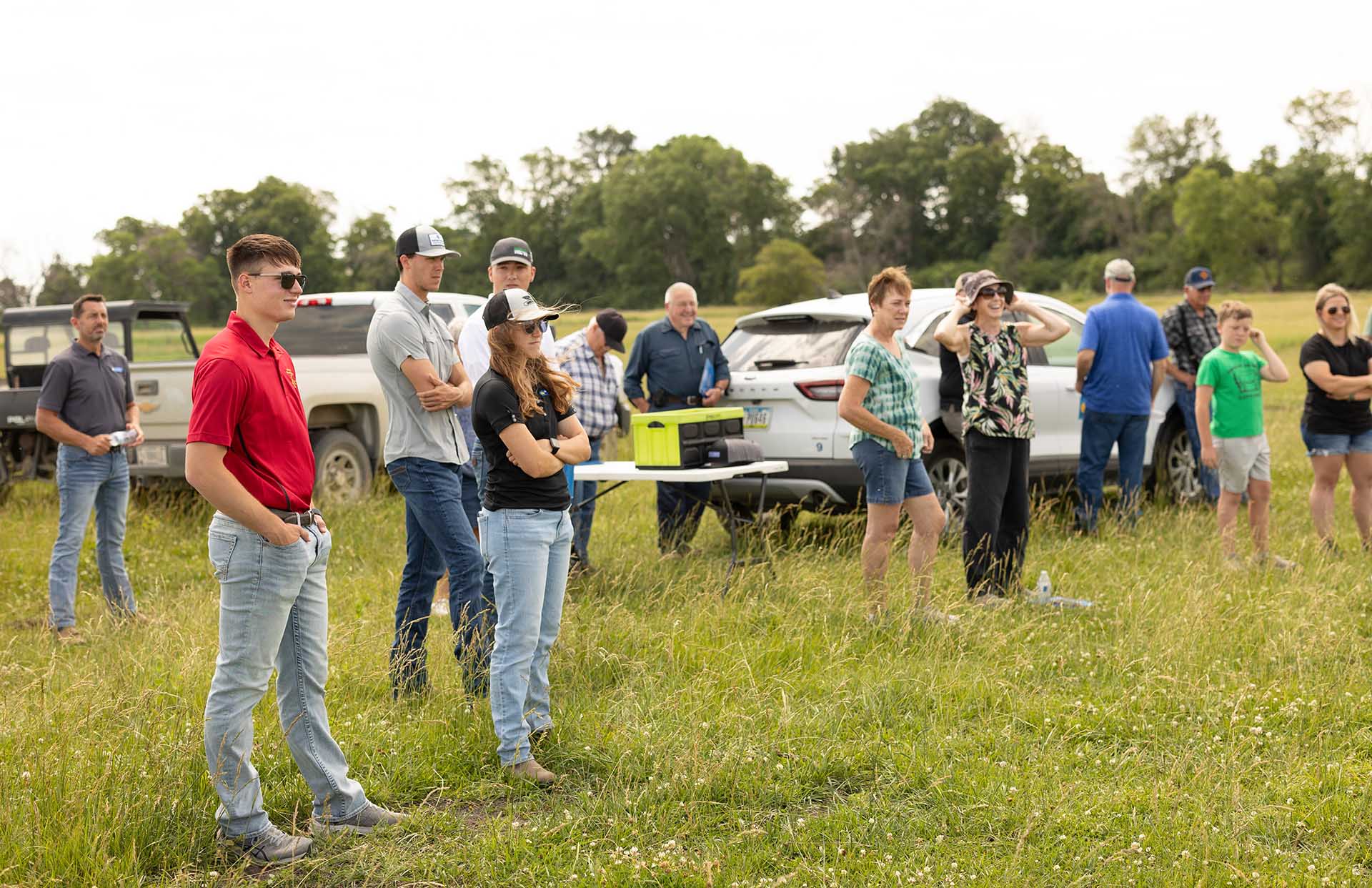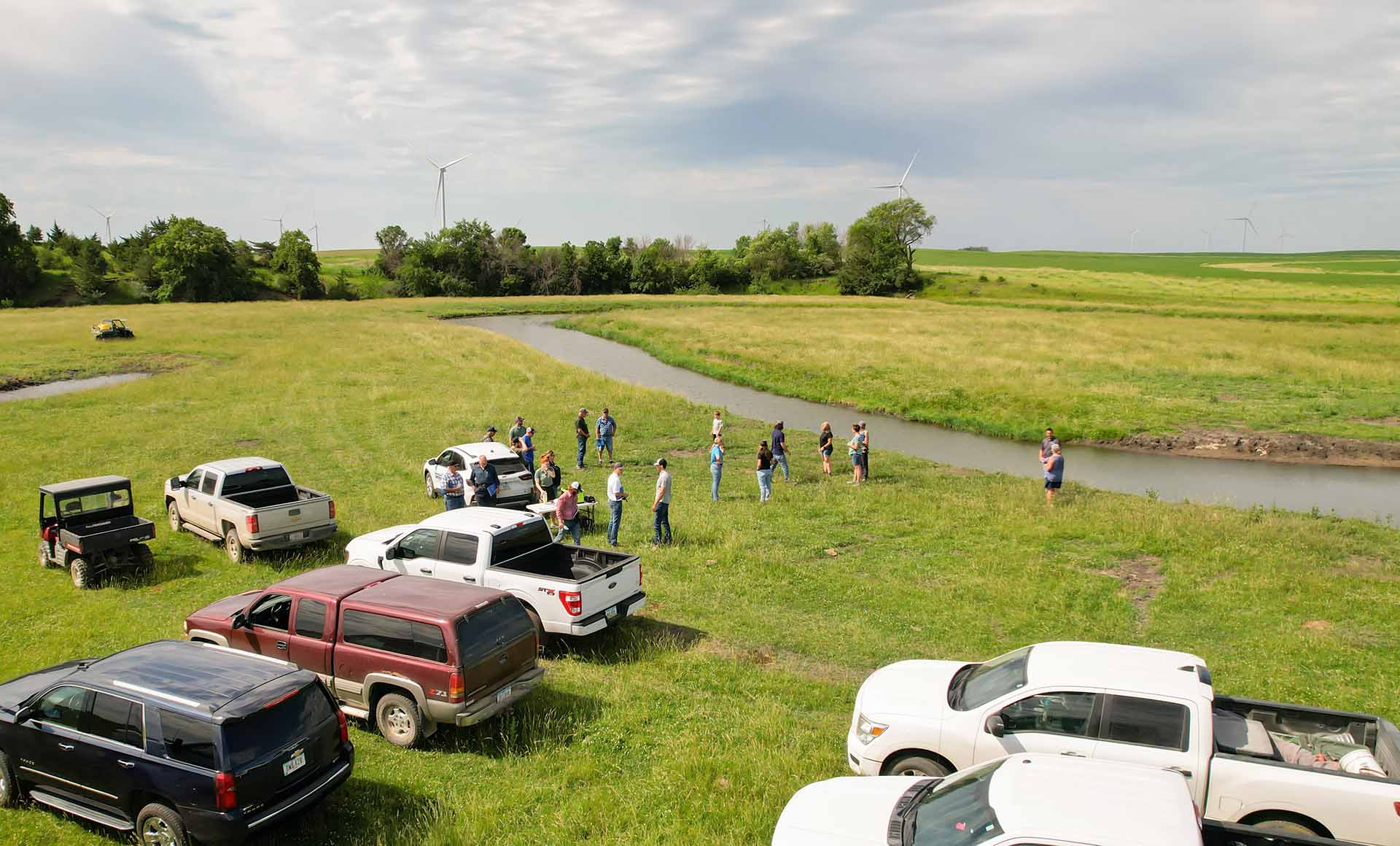
Topeka Shiner (Photo: Iowa Soybean Association / Joclyn Bushman)
Edge-of-field practice creates habitat and improves water quality
June 27, 2024 | Kriss Nelson
Linda Evans is proud to be the second generation of her family to own a piece of her family’s farm. As a self-proclaimed environmentalist, she is conservation-focused and welcomed the Iowa Soybean Association’s (ISA) invitation for an oxbow restoration project.
“I saw this project as a part of land stewardship,” says Evans. “Whether it’s planting cover crops, installing waterways, restoring oxbows or other conservation practices, most farmers want to be good stewards of the land.”
Three oxbows were restored on Evans’ land near Paton in Greene County. Recently, ISA hosted an Innovation to Profit meeting centered on Evans’ oxbows.

The event held on June 13 also highlighted other edge-of-field practices, water quality and research opportunities.
Evans worked closely with Brandon Iddings, ISA’s field service program manager and Darrick Weissenfluh, private lands biologist with the U.S. Fish and Wildlife Service to restore her oxbows.
“These are the first oxbows that have been restored on East Buttrick Creek and we have plans to do more,” says Iddings. “At one time, they were connected to the nearby river. After the river shifted 50 years ago or so, the oxbows became disconnected and filled with dirt.”
Unique to Evans’ oxbows is the installation of control structures, which Iddings says can be used to help manipulate how much water is being held.
Now the restoration is complete, and the banks have been seeded with native grasses and plants creating a space for a wildlife habitat, including the Topeka shiner.

Iddings says oxbows are crucial habitats for the Topeka shiner, an endangered species in Iowa.
After the flood water recede, oxbows allow small minnows like the Topeka shiner to lay eggs. With the smaller pool sizes, predator fish can’t get as big; smaller fish have a better chance at survival.
According to the United States Fish and Wildlife Service (USFWS) Species Status Assessment, the primary conservation action in Iowa for the recovery of the Topeka shiner is the restoration of their habitat through oxbow restoration. The discovery of a significant population of Topeka shiner was confirmed during the field day.
Evans entrusts the operation of her farmland to her nephew, Jonathan Marshall.
Evans initially worried that the oxbow restoration would take away pastureland from Marshall’s cow herd, but that turned out not to be the case.

“That land was low, swampy ground,” says Marshall. “The grass that grows there isn’t attractive to cows. By restoring the oxbow, it now allows them to have a place to drink and cool off.”
The task of excavating and restoring the oxbow was a low-cost and easy endeavor for Evans.
“It was a simple process and I appreciate the help from Brandon,” she says. “It’s a small step to doing better. We are working to make our land a better place and our food and water safer.”
According to the Journal of the American Water Resources Association, oxbows have shown the ability to treat an average of 62% of nitrates from tile-fed multipurpose oxbows.
To learn more about oxbow restoration and funding opportunities, contact Iddings at biddings@iasoybeans.com or call 515-729-0039.
Back